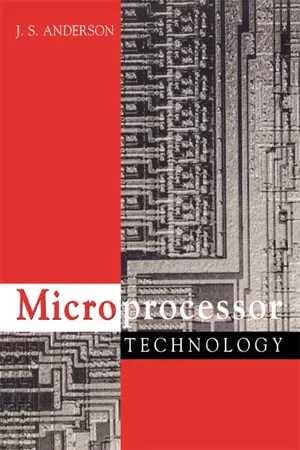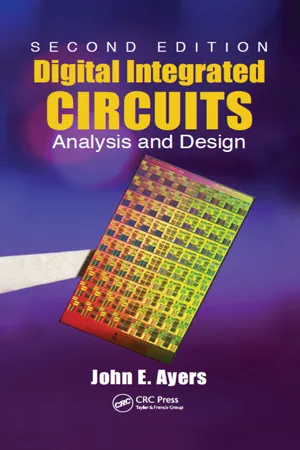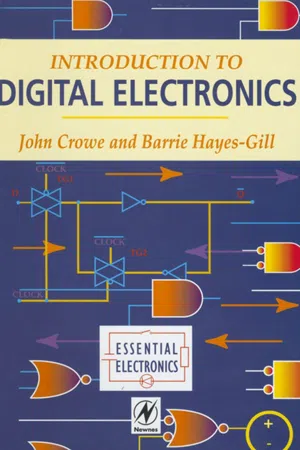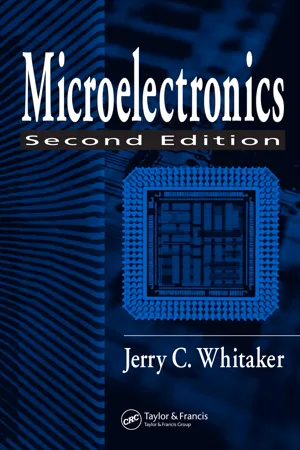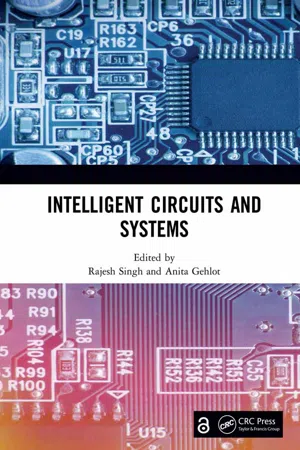RAM and ROM
RAM (Random Access Memory) is a type of computer memory that is volatile, meaning it loses its data when the power is turned off. It is used to store data and machine code currently being used. ROM (Read-Only Memory) is non-volatile memory that retains its data even when the power is turned off. It is used to store firmware and essential system instructions.
5 Key excerpts on "RAM and ROM"
- eBook - ePub
- J S Anderson(Author)
- 2012(Publication Date)
- Routledge(Publisher)
...It is this kind of technology – the high ‘packing density’ – which has enabled the microprocessor to be produced. The heart of a computer – on a chip. RAM and ROM memories Computer memory devices come in two basic types, RAM and ROM. These words are not as helpful as they could be. RAM stands for ‘random access memory’, a term which can in fact be applied to both types. ROM is ‘read only memory’ which means that the computer system can obtain information stored in the memory (‘read’ it) but can't store anything new in it (‘write’ to it). RAM stores can both be read from and written to, but both ROM and RAM have the random access facility. Put simply, this means that any data byte stored in the memory chip can be obtained as easily as the next; it doesn't matter whereabouts in the chip it is. Floppy disc systems offer the same facility. A program stored anywhere on the disc can (to all intents and purposes) be just as quickly accessed as any other. Compare this to information stored on magnetic tape. The first program on the tape is much easier to access than the last – if you want to do it automatically – so that a tape memory is not regarded as being random access. ROM memory chips are programmed by the manufacturer; they contain the computer operating system and standard routines (mini programs) that may be used quite frequently; there may be a routine to clear the screen, for example. This information is stored permanently in the ROM chip and is not lost when power to the machine is switched off. It is termed a ‘non-volatile’ memory. There is no possibility at all of making future changes to the contents of a ROM chip...
- eBook - ePub
Digital Integrated Circuits
Analysis and Design, Second Edition
- John E. Ayers(Author)
- 2018(Publication Date)
- CRC Press(Publisher)
...Additional increases in memory density will come about by a combination of device scaling, increased die size, and the ability to store multiple bits with a single transistor. Memory chips are classified as ROM or random access memory (RAM). The latter type should really be called “read write memory,” because it is the capability to write data that distinguishes it from ROM. On the other hand, the name “RAM” is somewhat misleading because both ROM and RAM provide random access: the cells can be accessed in any random order. RAMs can be further classified as static RAM (SRAM) and DRAM. SRAMs store information in latches. Therefore, these chips retain their data as long as the system power is on, without the need for clocking or refreshing. DRAMs store information using charges on capacitors. Because these capacitors exhibit some level of charge leakage, the voltages must be sensed and refreshed every few milliseconds to prevent the loss of data. RAMs are inherently volatile in nature. ROMs can be further classified according to their capabilities for programming and erasing. Those circuits called simply “ROM” are factory programmed and may not be erased or reprogrammed after fabrication. Programmable read-only memory (PROM) may be programmed by the customer one time only; no provision is made for erasure or reprogramming. Erasable programmable read-only memory (EPROM) may be programmed, erased, and reprogrammed many times. However, erasure requires removal of the chip from the system for flood exposure by ultraviolet radiation. Electrically erasable programmable read-only memory (EEPROM, or E 2 PROM) is considerably more convenient because the erase and program operations may be done with the chip in place. “Flash memory” is a special type of EEPROM that allows fast erasing of large blocks of data. All ROMs are nonvolatile. Today there is an almost limitless selection of memory circuits in the marketplace. No attempt will be made to catalog them here...
- eBook - ePub
- J. Crowe, Barrie Hayes-Gill(Authors)
- 1998(Publication Date)
- Butterworth-Heinemann(Publisher)
...10 Semiconductor memories 10.1 INTRODUCTION In general semiconductor memories are used when fast access of data is required. Semiconductor memories are historically divided into two types. These are Read Only Memory (ROM) and Random Access Memory (RAM). The main members of each family are shown in Fig. 10.1. Fig. 10.1 Semiconductor memory types Read only memory overview ROM devices are used for storage of data that does not require modification, hence the name ‘read only memory’. This definition however, has become less clear over the years and now includes devices whose data are occasionally modified. The original true ROM types are mask programmable ROM and fuse programmable ROM (or PROM). The mask programmed ROM devices are programmed at the factory during manufacture whilst the fuse programmed ROM devices are programmed by blowing small fuses and hence are sometimes called One Time Programmable ROM or OTPROM. Both mask ROM and OTPROM devices are true read only memory devices which are written only once. Other ROM devices that are, paradoxically, written more than once are: Erasable PROM (called EPROM) – these devices are programmed electrically but are fully erased with ultraviolet light; Electrically Erasable ROM (referred to as EEPROM or E 2 PROM) – these devices can be both programmed and erased electrically; FLASH memory – these devices use the same technology as EPROM but not only are they electrically programmed, they can be erased electrically in a very short time. The great advantage of all these ROM devices is that they are nonvolatile. This means that when the power is removed the stored data is not lost. Random access memory overview The RAM device family is divided into two types. These are Static RAM (SRAM) and Dynamic RAM (DRAM). The SRAM device retains its data as long as the supply is maintained. The storage element used is the transmission gate latch introduced in Chapter 9 (see Fig. 9.18(a))...
- eBook - ePub
- Jerry C. Whitaker(Author)
- 2018(Publication Date)
- CRC Press(Publisher)
...8 Memory Devices Shih-Lien Lu 8.1 Introduction 8.2 Memory Organization Memory Hierarchy • System Level Memory Organization • Memory Device Organization 8.3 Memory Device Types Read-Only Memory • Random Access Memory (RAM) • Special Memory Structures 8.4 Interfacing Memory Devices Accessing DRAMs • Refreshing the DRAM 8.5 Error Detection and Correction 8.1 Introduction Memory is an essential part of any computation system. It is used to store both the computation instructions and the data. Logically, memory can be viewed as a collection of sequential locations, each with a unique address as its label and capable of storing information. Accessing memory is accomplished by supplying the address of the desired data to the device. Memory devices can be categorized according to their functionality and fall into two major categories, read-only-memory (ROM), and write-and-read memory or random-access memory (RAM). There is also another subcategory of ROM: mostly read but sometimes write memory or flash ROM memory. Within the RAM category there are two types of memory devices differentiated by storage characteristics, static RAM (SRAM) and dynamic RAM (DRAM) respectively. DRAM devices need to be refreshed periodically to prevent the corruption of their contents due to charge leakage. SRAM devices, on the other hand, do not need to be refreshed. Both SRAM and DRAM are volatile memory devices, which means that their contents are lost if the power supply is removed from these devices. Nonvolatile memory, the opposite of volatile memory, retains its contents even when the supply power is turned off. All current ROM devices, including mostly read sometimes write devices are nonvolatile memories. Except for a very few special memories, these devices are all interfaced in a similar way. When an address is presented to a memory device, and sometimes after a control signal is strobed, the information stored at the specified address is retrieved after a certain delay...
- eBook - ePub
- Rajesh Singh, Anita Gehlot, Rajesh Singh, Anita Gehlot(Authors)
- 2021(Publication Date)
- CRC Press(Publisher)
...The DRAM is generally termed as “primary memory” [ 4 ]. The capacitor is at logic “1” considered as charged while discharged state with logic “0”. These logic “1” and “0” designate the data storage on the capacitor. The inconsistent power requirement in refreshing the bits after every few milliseconds (ms) raises the complication in processors. This is due to the constant requirement of power for refreshing the state of the cell after every few ms. When battery life is limited, continuous consumption of power is a concern for prolonged operations. The Flash and read-only memory (ROM) are examples of non-volatile memories. Erasable-programmable read-only memory (EPROM), electrically erasable programmable read-only memory (EEPROM) and ultraviolet erasable read-only memory (UVEPROM) are the subclasses of ROM. Flash memory based on floating-gate transistors (FGT) is considered as secondary or external memory with write/erase time ~1 ms/10 ms [ 4 ]. It is similar to the metal-oxide-semiconductor field-effect transistor (MOSFET) along with additional gate (termed as the floating gate (FG)) in between control gate and body. The NOR and NAND [ 5 ] are the classifications of Flash. As compared to page-write and cell size of NAND, NOR consists of large cell size with direct-write properties. For over 30 years, since the evolution of solid-state technologies, DRAM, SRAM and Flash dominated the semiconductor industry for memory. However, features such as low energy consumption, non-volatility, density and fastness are prerequisites of the future semiconductor memory. The emerging memories mentioned in Figure 62.1 have the potential to replace any of the existing memory technology for information processing and storage. Such an accomplishment in memory may result in “universal memory” that can replace conventional memories...
